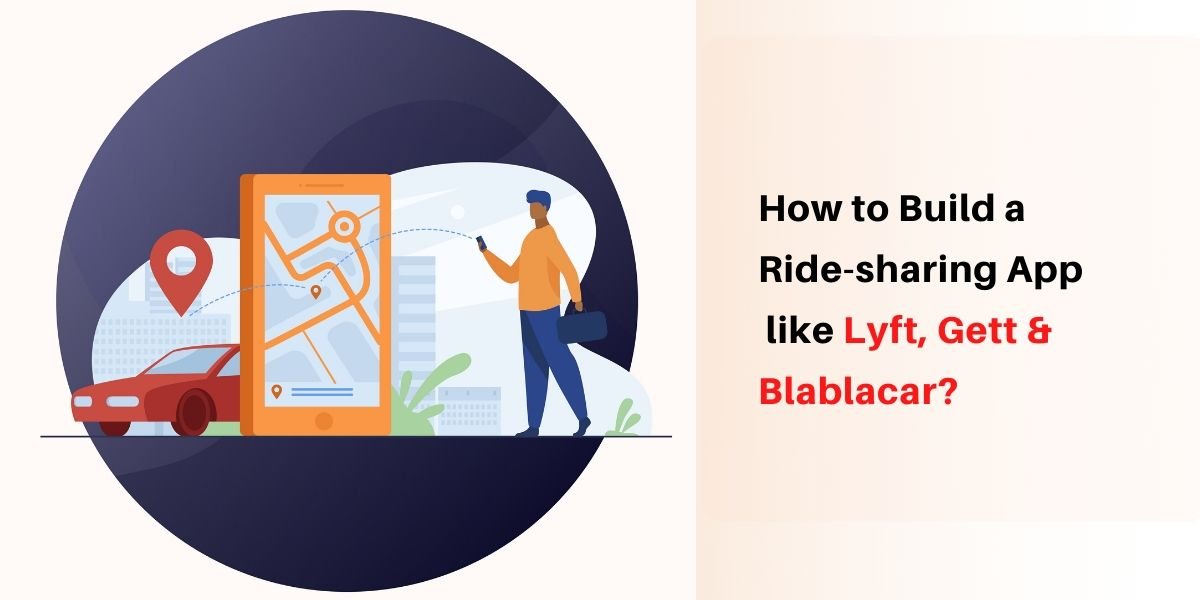The sharing economy seems to be the perfect confluence of capitalism and communism! On one side, the sharing economy ensures that a particular resource is not confined to a single person and it is equally distributed, so the usage becomes efficient. However, upholding the principle of capitalism, it also ensures that every service is paid for. This concept of shared economy has positively impacted a lot of industries, and one of the most major areas of impact is in the field of transportation.
There are different manifestations of the shared economy when it comes to transportation. On one side, there is ridesharing where the cab is shared between multiple users. On the other, there is also the concept of carpooling where the driver can opt in to share fuel expenses with other users/passengers traveling in the same route as the driver.
Let us focus on ridesharing for now. Ridesharing is the manifestation of the fact that users are sometimes willing to compromise on timing and privacy when it comes to gaining the advantage of economic efficiency.
Earlier, it would have been a challenge for the driver to identify different users who would need transportation in similar directions, and even more difficult to navigate to their location and pick them up. However today, it might not be perceived as a challenge – thanks to mobile apps and GPS technology. Ever since Uber ushered in the era of on-demand, location-based transportation services, transportation ceased to be what it was.
However, when it comes to ride-sharing, the algorithm is a bit different and complicated. In addition to matching the driver with a rider, the request also needs to be matched with other writers who are on the lookout for transportation for a similar route.
Thanks to the innovations carried out by companies like Grab, Lyft, Gett, & Uber, we now have a clear road-map to develop a ride sharing app. We have outlined below the steps involved in developing a ride sharing application.
Carrying out meticulous research
Researching the market is the first step towards making your ridesharing app successful.
You will need to have thoroughly understood your competition. There are global companies like Uber, Lyft, and Grab that intend to expand into new markets. There are also local players who are in a pursuit to establish their supremacy in a confined space. Some markets like India and China are so wide that they can accommodate many parallel players and still turn out profitable. It would also be a great idea to learn from the failures and the pain points of your competitors, so you can address it for your customers effectively and of course, profitably!
Defining your target customers goes hand-in-hand with analyzing your competition. Sometimes, demographic data might suggest that it is quite a promising market but deeper research will render that conclusion untrue. For example, if you look at the demographics of Beverly Hills, it does look like a promising market but in such a posh area, most of the residents would have a personal car, and they might not even consider renting a cab, leave alone going for ridesharing.
Metros with heavy working populations like New York, London, San Francisco, and even cities like Shanghai, Jakarta, and New Delhi could make promising arenas for ridesharing. It has been observed that the number of ridesharing bookings considerably increases in the evenings as the users are under no pressure to reach home back from work on time!
The market for ride-sharing apps is far from monotonous. There are different segments to which your ridesharing service can specifically cater to. In fact, it is this research that will come in handy in position in your ride-sharing business as an innovative one.
You can create ridesharing apps for government and city authorities, or school and college students, companies and enterprises, and even entrepreneurs and start-ups. In any case, ridesharing looks to capitalize on a peer to peer model and if you increase the likelihood of a person offering a ride to a similar person, the chances of success in business are proportionally high.
Execution
All the information that is essential to decide on whether or not you will want to create the app is now ready. Once you have decided to create the app, you will need to plan your execution.
The first part of the execution is getting your business registered is highly recommended that you create a limited liability company, so the losses are confined to the company and don’t trickle down to your personal finances. In addition to that, you will also need to start planning your inventory. You can consider using leased cars before your brand becomes a driving force behind other drivers signing up for your services.You will also need to hire staff including drivers and office work.
One of the most challenging and the most important steps in running your ride-sharing business is to develop your ridesharing app. Just like any other on-demand services app, your ridesharing Business also needs to have three different apps for the entities involved – the user, the driver, and the administrator.
The User-App
The user should be able to easily register for your service by creating an account. They should be able to create accounts using legacy credentials like Facebook and Google.
They should be provided with estimates for the ride based on signals like traffic, distance, and demand.
The users should also be able to filter cars of their choice based on their preferences. They should be able to book special rides for airports and for ladies.
The act should be able to support multiple modes of payment through a versatile payment gateway.
They should be able to continuously track the location of the car by using GPS and mapping platforms.
They should be able to broadcast a ride and also book a seat for broadcasted rides.
Push notifications should constantly notify the user about the progress in their ride-booking.
For security purposes, the app should also include a panic button and sharing of the ride details on social media platforms.
The app should have a review and rating system for the user to not only rate the driver but even their co-passengers.
The business should offer customers round the clock customer support across multiple channels like phone, email, and chat.
The Driver App
The driver should be offered assistance in navigation through mapping platforms like Google maps or Apple maps.
Just like the users, the driver should also be able to let passengers know based on their behavior.
The driver should be able to quickly transfer their earnings to their bank account without any hassle.
The driver should also have a complete log of the rides that they have taken.
To ensure that the reputation and trust on the app is kept aloft, the drivers should go through a verification process that verifies their identity. The process should be made simple and straightforward, so the drivers can complete the verification without any difficulty.
The Admin App
The administrative functions like the all-seeing eye of the app and all its functionalities. They should be able to manage users and drivers and also process the payments for the drivers. They should be given the power to view the chat between passengers and drivers. In addition to that, they should have complete command over the app, its contents, the commercials, and the website.
Developing the app
Developing a ridesharing app might seem like quite a hassle considering the complexity of the algorithm and the humongous functionalities that need to be brought together. However, there are a lot of Uber clothes available in the market. These clothes can be slightly modified to accommodate ridesharing, and it saves quite a lot of time and money. In addition to that, you can also be assured that the app is free from glitches at the basic level. All you need to do is get in touch with Uber clone app development companies and share your requirements. They will take care to customize your app in line with your business requirements and deliver it to you at the earliest.




